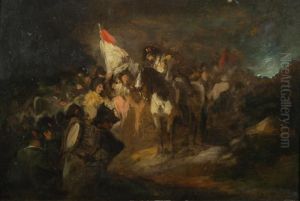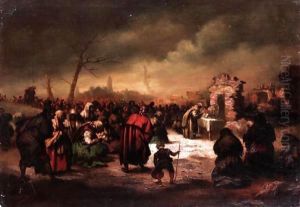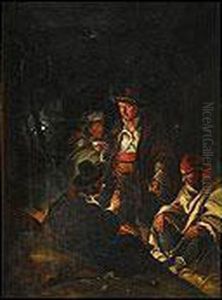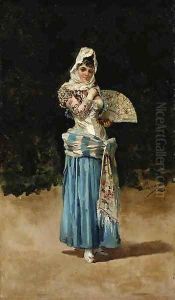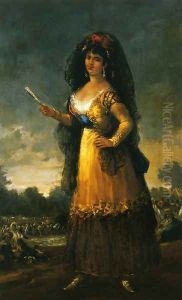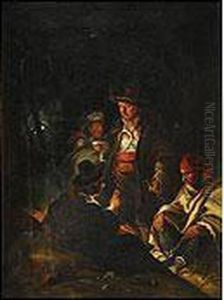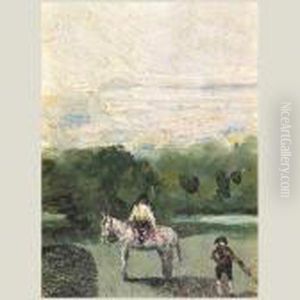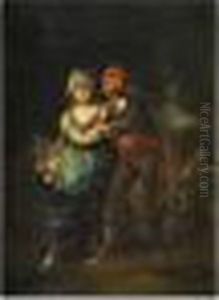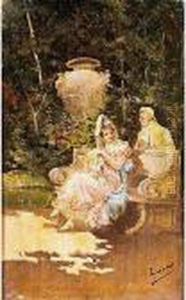Eugenio Lucas Villamil Paintings
Eugenio Lucas Villamil was a Spanish painter, known for his works in the Romantic style, following the footsteps of his father, Eugenio Lucas Velázquez, who was also a distinguished painter. Born in Madrid, Spain, in 1858, Lucas Villamil grew up in an artistic environment that greatly influenced his career choice. His father was one of the main representatives of Spanish Romanticism, and his style clearly impacted the younger Lucas's artistic development.
Lucas Villamil received his initial training from his father and later attended the Real Academia de Bellas Artes de San Fernando in Madrid. His education there allowed him to refine his techniques and establish a foundation in academic art. However, he was more drawn to the emotive and dramatic aspects of the Romantic movement, which is evident in his body of work.
Throughout his career, Lucas Villamil was known for his genre scenes, landscapes, and historical paintings. He had a particular talent for capturing the mood and atmosphere of a scene, often portraying dramatic skies and evocative lighting. His paintings often depicted scenes of everyday life in Spain, as well as episodes from Spanish history and literature, reflecting a nationalistic pride that was common among artists of his time.
In addition to painting, Lucas Villamil also contributed to the preservation of Spanish artistic heritage. He was involved in the restoration of paintings from previous centuries, including works by some of the Spanish masters. This aspect of his career highlights his respect for tradition and the influence of the past on his own work.
Lucas Villamil's contributions to Spanish art were recognized during his lifetime, and he participated in numerous exhibitions, both in Spain and abroad. He received various awards and honors, which helped to establish his reputation as a respected artist in the Romantic tradition.
Eugenio Lucas Villamil passed away in 1918, leaving behind a legacy that was overshadowed by the fame of his father but still significant in its own right. His works are part of several collections in Spain, including the prestigious Museo del Prado in Madrid, where they continue to be appreciated for their artistic merit and historical value.















